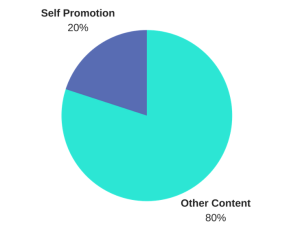The 80/20 Rule of Marketing
Or: Why constantly promoting yourself and your services can have the opposite effect.
One of the best ways to explain the 20/20 rule of marketing is to imagine a scenario where you are hanging out with your friends. What if you only talked about ONE thing… every single time you hung out. And that one thing was something you were trying to sell to them. YIKES! Probably not the best way to keep friends, right? Perhaps you would be lucky if those same friend would hang out if you only talked about what you were sellingt 80% of the time. Then you could engage in conversation about other topics 20% of the time. How about, an even better idea. What if you switched the 80/20 rule around and most of the time you could talk about mutually entertaining and enjoyable subjects, leaving only 20% of the time to promote your product?
The same idea holds true for social media practices. If a company only posts about their products and services, their friends and followers may quickly tire of hearing about it. Ideally, companies will intersperse this type of information among other content that is a little more personal and engaging. Just as your friends want to learn more about you, a company’s following typically wants more than just a sales message.
At Jemully, we encourage our clients to follow the “80/20” rule for social media marketing. In fact, we recommend the 80/20 marketing mix for all of your content marketing. This rule says only 20% of the content will directly promote your products or services. The other 80% can be topics related to your brand, or things that you have strategically planned that your audience will enjoy. We can adjust these percentages, depending on the client, but it is a good rule of thumb. You are more likely to get engagement on your posts if they vary in type. It makes your sales pitch less likely to be tuned out by your audience.






